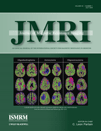DCE-MRI pixel-by-pixel quantitative curve pattern analysis and its application to osteosarcoma
Abstract
Purpose
To present a novel curve pattern analysis (CPA) method to characterize and quantify signal curves from the dynamic contrast-enhanced (DCE) magnetic resonance imaging (MRI) data without any prerequisites such as arterial input function (AIF) or T1 measurement.
Materials and Methods
CPA parameters represent characteristics of the scaled DCE signal curve. Simulations were performed to investigate the dependence of CPA parameters on T1, TR, and flip angle. In vivo studies were performed on five pediatric patients with osteosarcoma. Parametric maps were generated using the CPA method and a pharmacokinetic model-based method for comparison.
Results
Simulations show that CPA parameters varied less than 2% when T1 changed from 300 msec to 1500 msec, and less than 10% when the flip angle changed from 30° to 40°. Various curve patterns can be qualitatively identified and recognized from CPA parameter maps. Simulation and in vivo studies showed that the CPA parameter had a strong correlation with kep, with correlation coefficients of 0.9983 in the simulation and 0.95 in the in vivo studies.
Conclusion
A novel CPA method is presented. Simulations and in vivo studies showed that the CPA method provides a feasible alternative to quantifying DCE-MRI studies with possibly higher repeatability by minimizing variations potentially induced by AIF and T1 estimations and model dependence. J. Magn. Reson. Imaging 2009;30:177–184. © 2009 Wiley-Liss, Inc.




